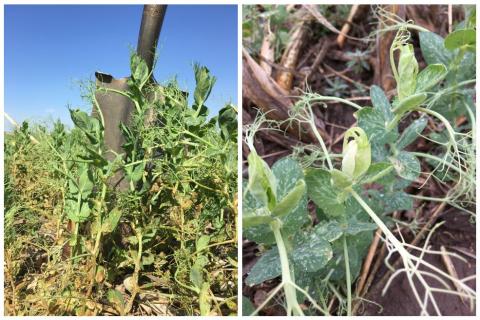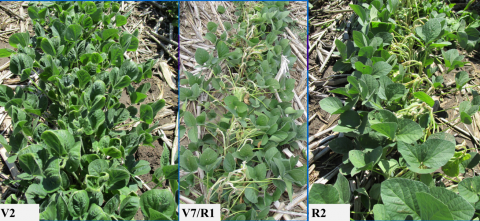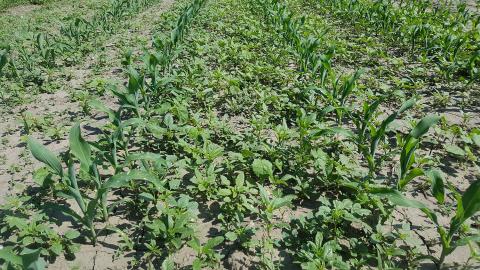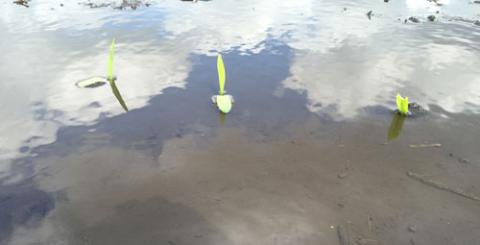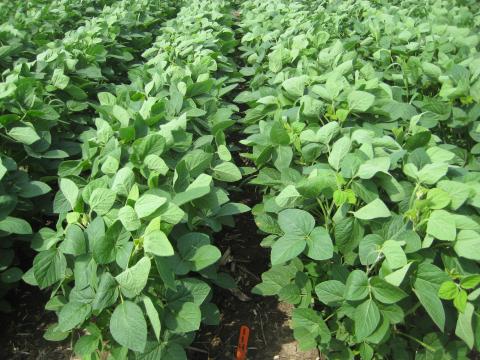Field Peas—A Guide to Herbicide Carryover And Herbicide Efficacy
February 22, 2018
How to avoid herbicide carryover injury when designing an effective herbicide program for crop rotations integrating field peas.
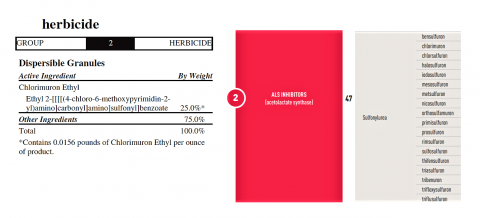
What Should You Look For in a Herbicide Label
January 26, 2018
A herbicide label is a legal document providing important information about a herbicide, its appropriate use, and the precautions needed to avoid off-target movement and to protect environmental quality. It can also help you achieve the most efficient and sustainable application. Learn more about what to watch for on herbicide product labels.
Research on the Impact of Dicamba Micro-Rates on Non Dicamba-Tolerant Soybeans
January 10, 2018
Research at the university's Haskell Ag Lab at Concord in 2016 and 2017 studied the effects of microrates of two dicamba products applied at one of three soybean growth stages. The trials showed that non-dicamba tolerant soybeans were sensitive to even very low micro-rates of Engenia and XtendiMax; response varied according to amount and growth stage, with exposure at later stages having less effect.
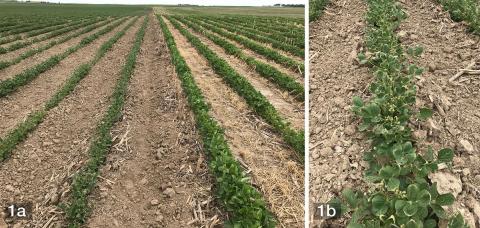
Dicamba Injury Symptoms on Sensitive Crops
June 28, 2017
Dicamba-resistant soybean, genetically engineered to provide resistance to dicamba and glyphosate, was made commercially available for the 2017 growing season. This article looks at potential dicamba injury to sensitive crops and plants.
Consider Corn Growth Stage When Applying Postemergence Herbicides
June 14, 2017
When applying postemergence herbicides, consider corn growth stage, weed species present, and crop and weed heights. The article includes how to determine corn growth stage, recommendations to avoid problems, and a table of application restrictions for common postemergence herbicides.
Herbicide Considerations When Replanting
June 8, 2017
Due to May flooding from heavy spring rains, replanting of corn and soybean continues in eastern and southern Nebraska. Here are two factors to consider regarding herbicide use in replanting.
Effect of Excessive Rainfall on Efficacy of Residual Herbicides Applied in Corn and Soybean
May 23, 2017
How excessive rainfall may affect the efficacy of residual herbicides is complex and influenced by multiple properties of the soil and the herbicide applied.
New Soybean Herbicides for 2017
March 6, 2017
Information on new soybean herbicides, incuding their modes of action
